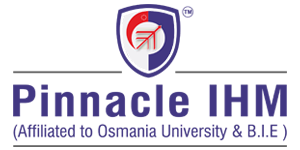
When the pressure in your blood vessels is too high (140/90 mmHg or greater), it is known as hypertension, or high blood pressure. It is common, but if left untreated, it can get dangerous.Any blood pressure reading more than 180/120 mm Hg is regarded as a hypertensive crisis or emergency. In the event that someone has these blood pressure values, get emergency medical attention.
According to the World Health Organisation, hypertension is characterised by a systolic pressure greater than 160 mm Hg and a diastolic pressure greater than 95 mm Hg. Therapy should start with medication and diet if the diastolic pressure is 100 mm Hg or above. Hypertension is merely a symptom and not an illness.

Four General Categories
★ Blood pressure that is normal:-
There is less than 120/80 mm Hg of blood pressure.
★ increased Blood pressure :-
The bottom number is below, not over, 80 mm Hg, and the top number varies from 120 to 129 mm Hg.
★ Hypertension in Stage 1:-
The lower value is between 80 and 89 mm Hg, and the upper number is between 130 and 139 mm Hg.
★ Hypertension in Stage 2:-
90 mm Hg or more is the bottom number, while 140 mm Hg or more is the top number.
Types of hypertension
There are two main types of high blood pressure:
★ Primary high blood pressure or Hypertension
★ Secondary high blood pressure or Hypertension
★ Primary high blood pressure:-
Without a known cause, primary hypertension gradually worsens
★ Secondary high blood pressure :-
Untreated medical conditions including renal disease or hormone imbalances are the root cause of secondary hypertension.
Based on the elevation in diastolic pressure, hypertension is classified into 3:
★ Mild hypertension
★ Moderate hypertension
★ Severe hypertension
★ Mild hypertension:
Diastolic pressure is 90 to 104 mmHg in this form. Treatment is based on weight loss, sodium restriction and behavioural techniques.
★ Moderate hypertension:
Diastolic pressure is 105 to 119 mm Hg with moderate hypertension. Nutritional therapy is supported by drugs such as B blockers.
★ Severe hypertension:
Diastolic pressure is 120 to 130 mm Hg and above. Apart from giving treatment for moderate hypertension peripheral vasodilators are given. Diet therapy revolves around potassium replacement, nutritional support for weight management and sodium modification.
Foods for hypertension
1. **Leafy Greens**: High in potassium, these veggies (such as spinach, kale, and Swiss chard) aid in the body’s ability to eliminate excess sodium and control blood pressure.

2. **Berries**: Rich in flavonoids and antioxidants, berries like raspberries, strawberries, and blueberries have been connected to lowered blood pressure.

3. **Oats** : Due to their high soluble fibre content, oats can promote heart health by lowering blood pressure and lowering cholesterol.


4. **Fatty Fish**: Rich in omega-3 fatty acids, which support heart health and may help lower blood pressure, fatty fish such as salmon, mackerel, and sardines are a great source of these nutrients.

5. **Nuts & Seeds**: Almonds, walnuts, flaxseeds, and chia seeds are excellent providers of potassium and magnesium, two nutrients that are necessary for preserving normal blood pressure levels.


Food to be avoid:-
If you have high blood pressure, there are several foods you should stay away from. These include sugar-filled drinks like soda and energy drinks, processed foods heavy in sodium, fatty meats like bacon and sausage, and binge drinkin
Conclusion :-
A balanced diet that includes healthful foods while avoiding hazardous ones can be essential to effectively managing hypertension. This can be achieved by learning the definition of hypertension, its forms, and symptoms to look out for in yourself or loved ones.
To Get More information:
- Visit: https://pinnacleihm.com
- Phone No:+91 92465 28830 | +91 98665 38830
- Email: info@pinnacleihm.com
- Address:#12-1-59/NR, Goods Shed Road,Behind Registration Office, Moosapet, Hyderabad-500018
- Maps: Pinnacle Institute of Hotel Management & Catering Technology
